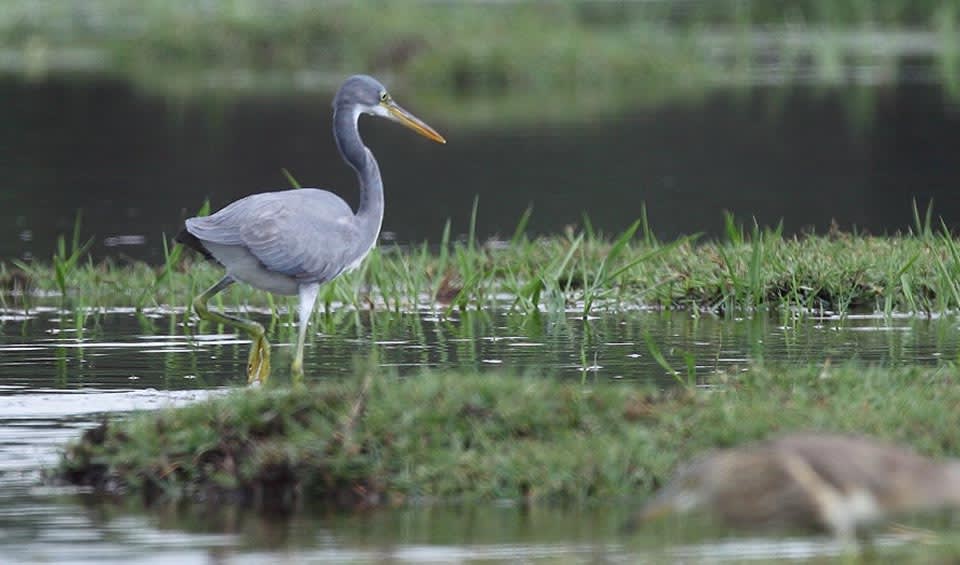One of the rarest and most majestic heron species in the world. Native to the foothills of the eastern Himalayas, this elusive bird is found in scattered locations across Bhutan, northeastern India, Myanmar, and possibly southern China. Its striking appearance and critically endangered status make it a significant species for conservation efforts.
One of the most captivating visual aspects of the White-bellied Heron is its eyes. They are unusually expressive and a deep red color, which stands out against the subtle colors of its plumage. This feature not only adds to the bird’s mystique but also enhances its ability to locate prey in murky waters.
This heron species inhabits remote riverine ecosystems, often in dense forests near fast-flowing rivers and streams. The White-bellied Heron is highly dependent on such habitats, where it hunts for fish, frogs, and other aquatic animals. The bird uses its long legs to wade through shallow waters, striking swiftly with its bill to catch unsuspecting prey. This method of hunting requires pristine water conditions, which makes the heron particularly vulnerable to pollution and changes in river flow due to dam construction.
Breeding habits of the White-bellied Heron are less well-known due to the bird’s secretive nature and rare status. However, it is understood that they nest in tall trees close to water sources. The nests are large platforms made from sticks and vegetation, where the female typically lays two to three pale blue eggs. Both parents share responsibilities for incubation and feeding the young.
Distribution
 Bangladesh
Bangladesh Bhutan
Bhutan India
India Myanmar
Myanmar Nepal
Nepal Official estimate
Official estimate
Anything we've missed?
Help us improve this page by suggesting edits. Glory never dies!
Suggest an editGet to know me
Terrestrial / Aquatic
Altricial / Precocial
Polygamous / Monogamous
Dimorphic (size) / Monomorphic
Active: Diurnal / Nocturnal
Social behavior: Solitary / Pack / Herd
Diet: Carnivore / Herbivore / Omnivore / Piscivorous / Insectivore
Migratory: Yes / No
Domesticated: Yes / No
Dangerous: Yes / No




